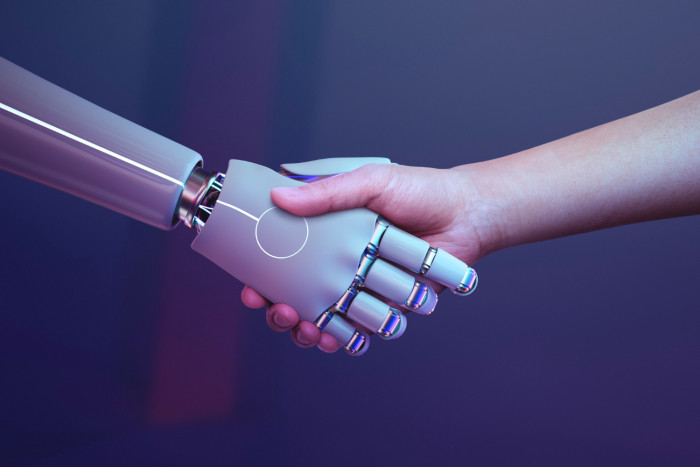Understanding and predicting consumer trends in product development is critical in today’s fast-paced and dynamic market. Consumer preferences shift constantly, with new trends emerging at an unprecedented rate. As a result, businesses often find themselves in an endless race to stay ahead, especially in product development. However, the emergence of Generative artificial intelligence has unlocked a ground-breaking solution where businesses can understand and predict current and future consumer trends in product development.
Leveraging this revolutionary AI technology to predict and shape trends in product development can be a powerful business strategy. But how does Generative AI help achieve this? Let’s find out.
The Rise of Generative AI in Predicting Consumer Trends and Behavior Analysis
Generative AI services can analyze massive datasets, including social media interactions, location data, browsing habits, and purchase histories, to mention a few. This helps businesses uncover hidden consumer trends and extract insights that were initially impossible to discover. As a result, they can predict consumer behavior and trends more accurately. This enables businesses to understand and anticipate their customers’ expectations. With this wealth of information, they can develop products that meet these customers’ demands, leading to customized products and tailored experiences.
But how does Generative AI work this magic? Let's dive deeper into the details.
How Generative AI Predicts and Shapes Consumer Trends in Product Development
Here are several ways in which Generative AI works its magic to predict and shape consumer trends in product development:
Data Collection and Pattern Recognition
Generative AI thrives on data. So, the more comprehensive the data, the more accurate its predictions. AI can meticulously gather and process data, including online reviews and social media interactions, to develop detailed consumer profiles. This enables product developers to understand and predict potential consumer behaviors and trends. With that information, they can identify patterns and create products that match consumer preferences and expectations.
Predictive Modeling
Upon identifying patterns, Generative AI algorithms use their analysis to build predictive models. The models act as futuristic crystal balls, enabling organizations to forecast future consumer trends and behaviors. As a result, they enable informed decision-making across product development and other domains, such as marketing and inventory management.
Sentiment Analysis
Generative AI performs sentiment analysis on social media conversations, forum discussions, and customer reviews to understand consumer opinions on specific product design elements. That information enables businesses to gauge the public's opinion about their product. Understanding consumers' feelings or thoughts about the product can offer valuable insights into potential trends. Also, businesses can leverage the feedback to improve product design, enhancing the chances of positive product reception.
Collaborative Filtering
Did you know you can use AI to recommend products based on the behaviors and preferences of similar consumers? Well, this is possible thanks to collaborative filtering AI algorithms. This approach helps developers personalize product recommendations and predict what customers may want next.
Generative AI for Product Ideas
When creating a new product, there’s a lot of uncertainty. How will customers perceive the newly released product? What about its profitability? All these concerns bother many product developers and businesses at large. Therefore, businesses need to be careful when coming up with new ideas to ensure they align with customers' expectations. One way to achieve this is using generative AI to create new product ideas.
Generative AI algorithms can help you come up with new product ideas, not based on intuition but on data and market trends. They can analyze extensive datasets, including customers’ reviews, competitor products, and social media interactions, to recommend new product ideas that address consumer expectations and needs. This way, you can rest assured of faster yet targeted development of new products.
Personalization Strategies
It’s no secret that personalization of products has become critical to business success. The ability to create customized products empowers businesses to achieve more with their products, and Generative AI plays a central role in achieving personalization at scale.
AI-powered personalization strategies help you tailor consumer experiences. This goes a long way beyond product development to targeted marketing, customized product offerings, and personalized recommendations. So, Generative AI not only helps you predict and shape consumer trends in product development but also enables you to tailor your product recommendations.
Benefits of Using Generative AI to Predict and Shape Consumer Trends in Product Development
Here are some irrefutable advantages of using Generative AI to predict and shape consumer trends in product development:
1. Improved Customer Experience
Using Gen AI to predict and shape consumer trends in product development helps you deliver products that meet customer expectations. This includes tailoring them to the individual customer needs. The result? Improved customer experiences. But what does that mean to the business?
Well, a customer who feels their needs have been addressed through a product is satisfied. So, it's a win-win for both the customer and the business. The business benefits since customers become loyal to the brand, which is crucial in today's highly competitive business environment.
2. Increased Revenue and Sales
As initially stated, there’s a lot of uncertainty when developing a new product. Its ability to generate revenue and return on investment (ROI) is always a major concern for businesses. However, using Generative AI helps businesses anticipate consumer trends and tailor offerings to meet customer demands. This enables them to boost revenue and sales, outpacing competitors.
3. Improved Efficiency
Gone are the days when businesses relied on intuition and guesswork to develop new products. With Generative AI, they can accurately predict future consumer trends. This enables them to make informed decisions about new products and optimize product development operations. As a result, it improves operational efficiency and resource allocation.
Final Thoughts
Generative AI has revolutionized how businesses predict and shape consumer trends in product development. From analyzing vast datasets and identifying patterns to predictive analytics and collaborative filtering, AI has opened a window into the future of consumer behavior analysis. This technology has empowered businesses to create tailored and more engaging products, enabling them to navigate the ever-evolving market landscape with precision. As AI evolves, we can expect more accurate and complex predictions, ushering in a new era where consumers and businesses will be in perfect harmony. However, as businesses increasingly use this technology to predict and shape consumer trends in product development, they must consider ethical concerns to ensure the responsible use of AI.












